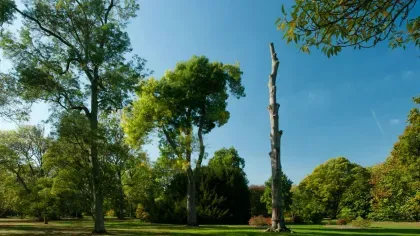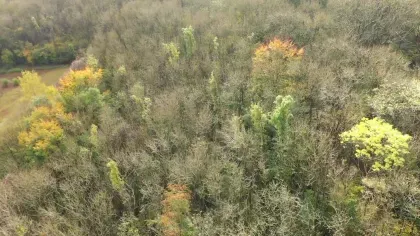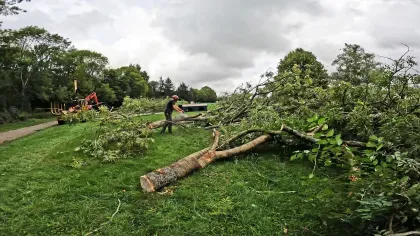26 June 2025
7 min read
Can evolution save ash trees from dieback?
How a group of scientists have found hope for ash trees by proving a 100 year-old evolutionary concept

Scientists at RBG Kew and Queen Mary University of London have found evidence that young ash tree populations are evolving resistance to ash dieback, proving an idea that was first penned in 1918 in the process!
What is ash dieback?
Ash dieback is a disease caused by a fungus called Hymenoscyphus fraxineus, an invasive species which has spread across Europe in the past 30 years. The fungus grows into the trees’ vascular systems (the tubes that transport water through the tree) and eventually blocks them. This means water and nutrients absorbed by the roots can no longer reach the top of the tree and the affected area eventually dies. It’s a bit like cholesterol clogging up our human arteries and causing heart disease.
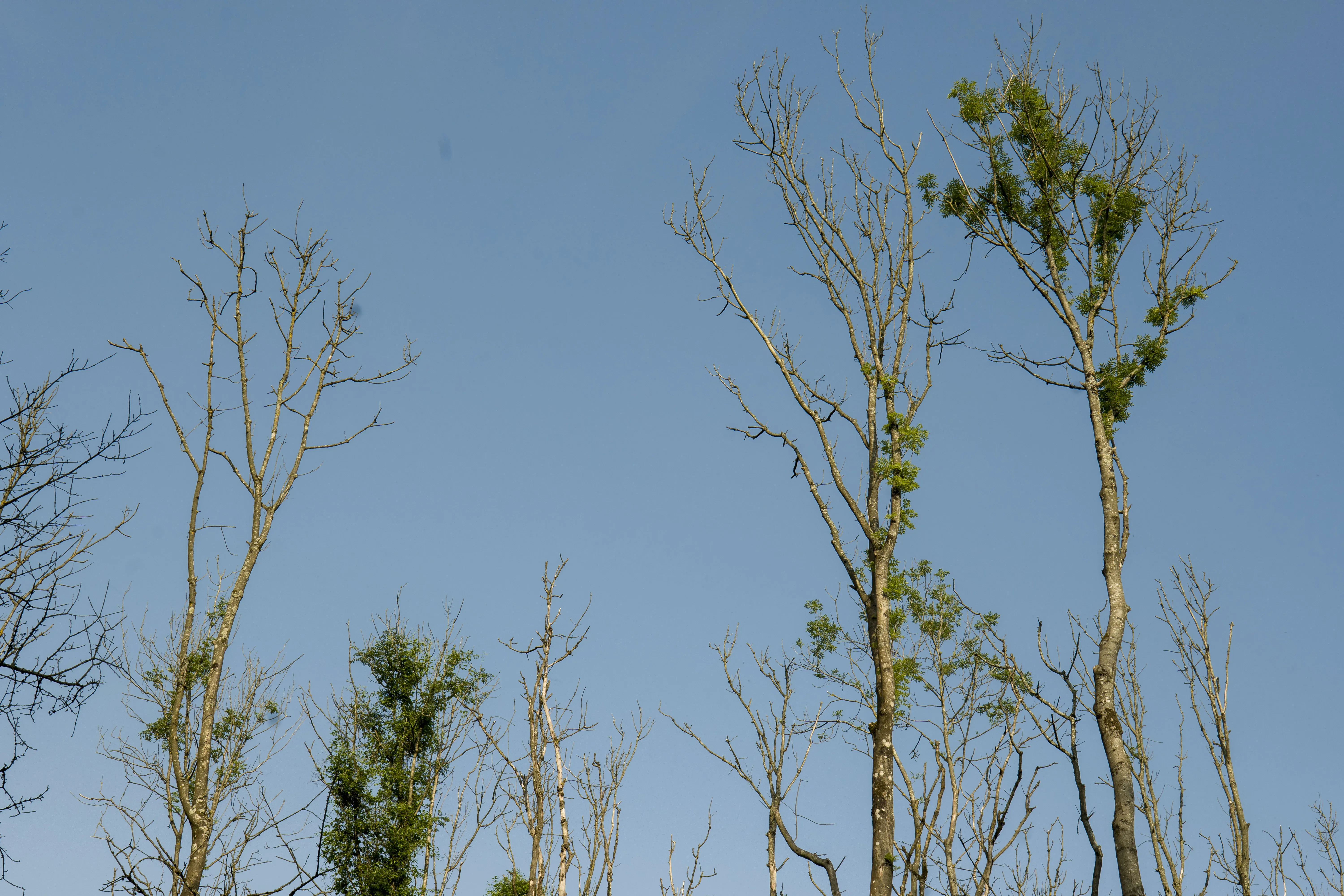
An evolutionary arms race
Plants sometimes develop resistance to diseases over time, but this normally happens when the pathogen, in this case a fungus, and the host, in this case ash trees, evolve side-by-side over hundreds or thousands of years. This leads to an arms race, where the host develops ways of fighting the infection, while the disease finds ways of getting around their hosts’ immunity.
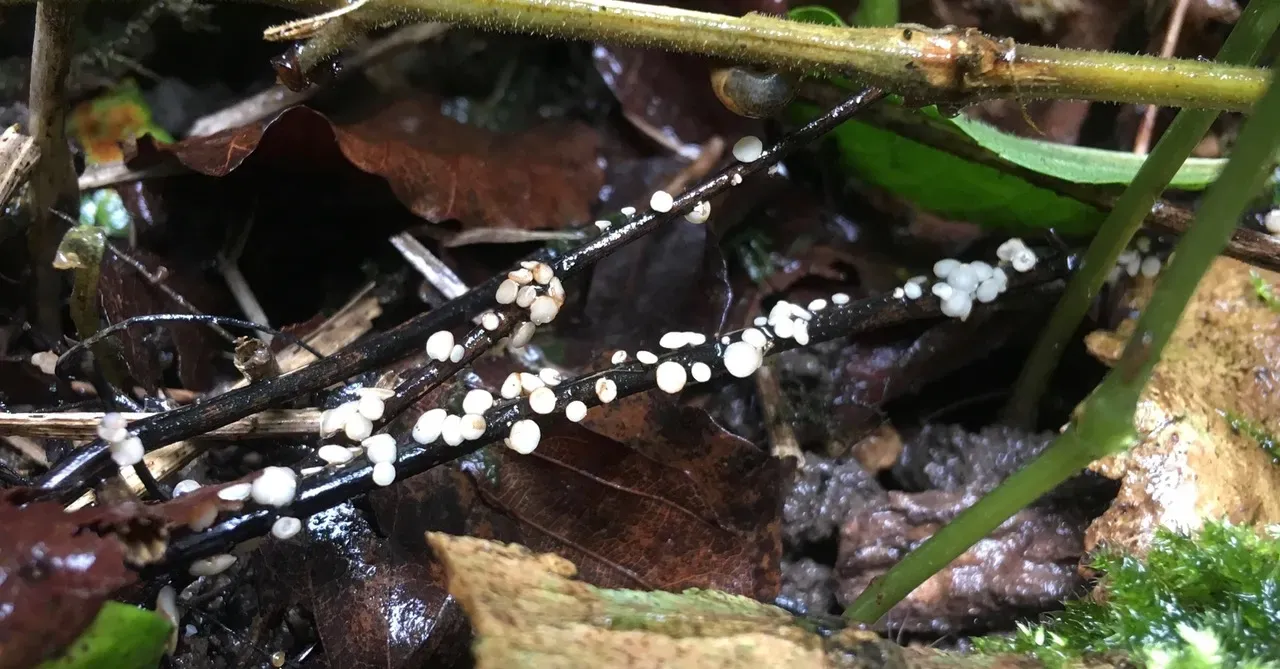
Because this fungus is originally from East Asia, our native trees have not had hundreds of years to develop their defences. The result is devastation of our native trees by this fungus, with up to 85% being killed in some areas. Ash trees are financially, environmentally and culturally important, and their value to the UK economy is estimated at hundreds of millions a year.
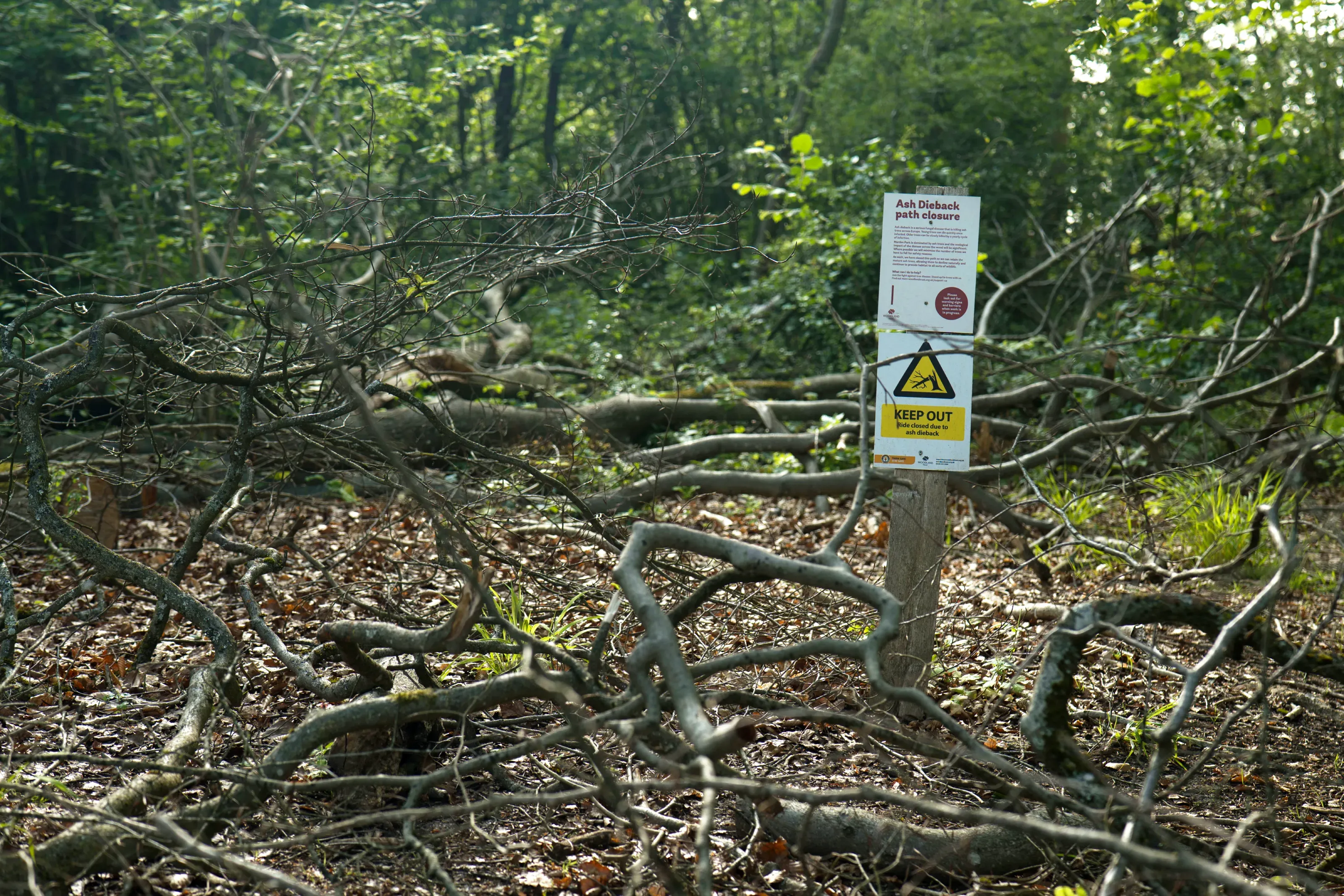
Hope for ash trees
Our scientists at Kew have been working with researchers at Queen Mary University of London to study ash trees in the Woodland Trust’s Marden Park in Surrey, South East England. What they’ve discovered brings hope for European ash trees: the tree population they studied is evolving resistance to ash dieback. Not only is this brilliant news for the conservation of this iconic species, it’s also a major breakthrough in evolutionary science.
As part of the study published in Science, our scientists have found the clearest ever evidence of something called polygenic evolution, an idea that was first developed over 100 years ago, happening in real-time. But how is this different from other examples of evolution?
Why ash trees are different from moths
The textbook example of evolution in action is the colour of the peppered moth…


Normally, this moth is a pale colour, which is camouflaged against lichen-covered tree trunks. Occasionally dark coloured moths occur, but they’re much easier for predators to spot, so they don’t survive for long.
However, during the industrial revolution, the pollution levels caused the tree trunks to blacken. This meant that now the light moths were conspicuous and the dark ones were well camouflaged. Suddenly, the number of dark moths increased dramatically. Years later, when pollution levels went down, the trees returned to their natural, pale colour and so did the moths.
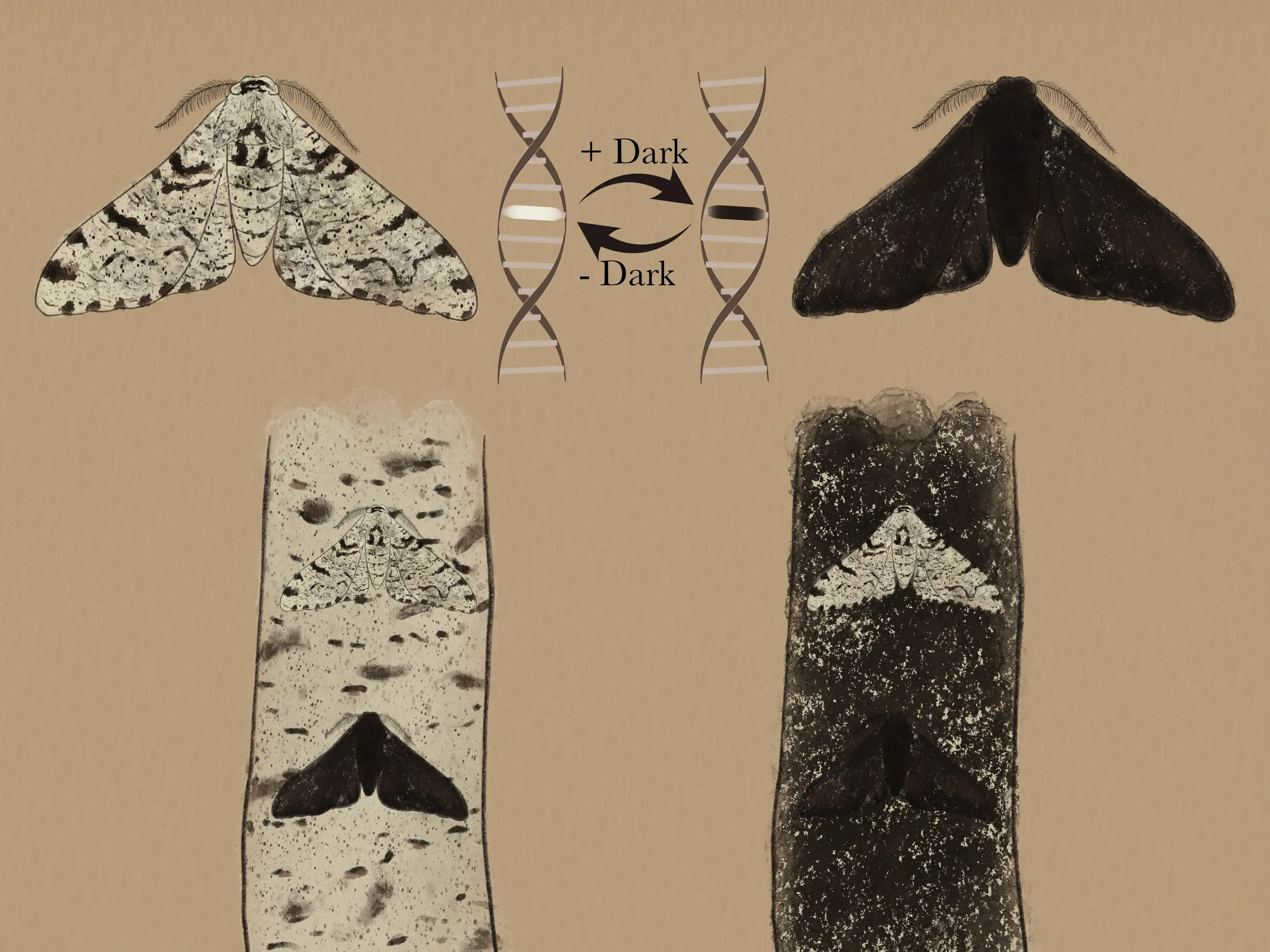
The peppered moth is actually an example of just one type of evolution, called monogenic evolution. This is where a single genetic difference gives an individual some advantage over others, so it becomes common in the population. But this isn’t the only way that evolution happens, and it isn’t what’s happening in our ash trees.
It’s long been theorised that most evolution is polygenic, meaning that it involves multiple genes all at once. The idea of polygenic evolution was first put forward in 1918 to try to reconcile Charles Darwin’s theory of evolution with what was known about genetics at the time. But it has been very difficult to see it happening at the DNA level, until now. New technologies mean we can look at lots of genes all at once, and this is what our scientists have been doing with their ash trees.
But what is polygenic evolution?
What do cats and ash trees have in common?
To understand polygenic evolution, we first have to understand how several genes can interact to give a final effect. A good example of this is the colour of a cat’s fur.
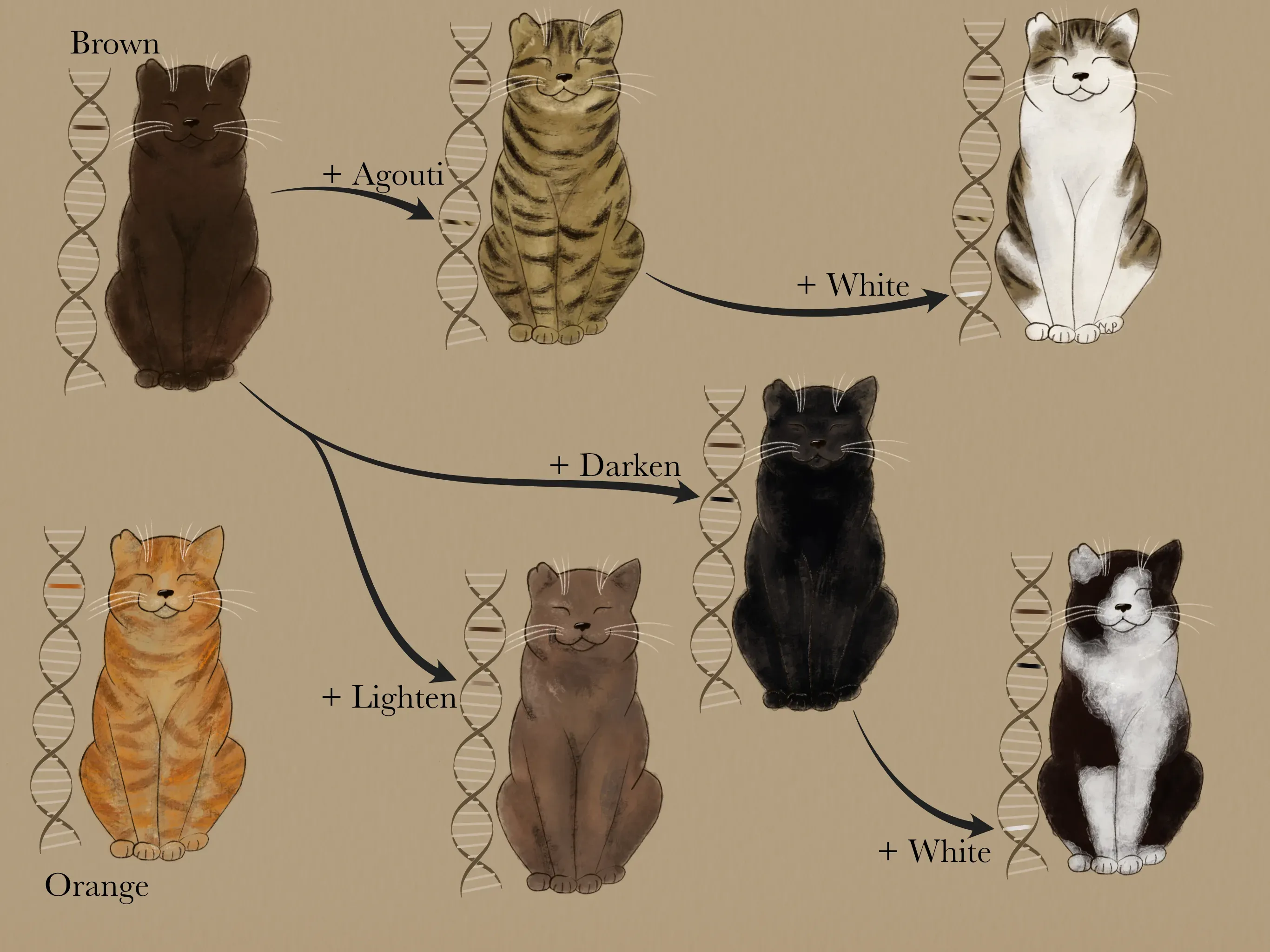
In cats, there is one gene which decides the base colour, either orange or brown, which can then interact with several others to give the final colour.
For example, if the brown base colour is combined with a second gene called agouti, you get a tabby cat. Without the agouti gene, you get a solid colour. How dark the colour is will be determined by a third gene, and then yet another gene will add white patches.
Cat fur colouring is a relatively simple polygenic trait; it’s controlled by just a handful of different genes. But that’s enough to give us the myriad of different colours and patterns we see in our feline companions.
Imagine that tabby cats with white patches had some advantage over other colours. Three different genes would then become more common in the cat population: the brown gene, the agouti gene and the white patches gene.
Now imagine if one colour - like orange - involved hundreds or even thousands of genes with each one slightly lightening or darkening the colour. These would have a cumulative effect and would mean thousands of genetic variations would become more common in the population if it was more advantageous to be a particularly vibrant orange cat. That’s polygenic evolution and that’s what our scientists have seen happening in British ash trees, in a single generation.
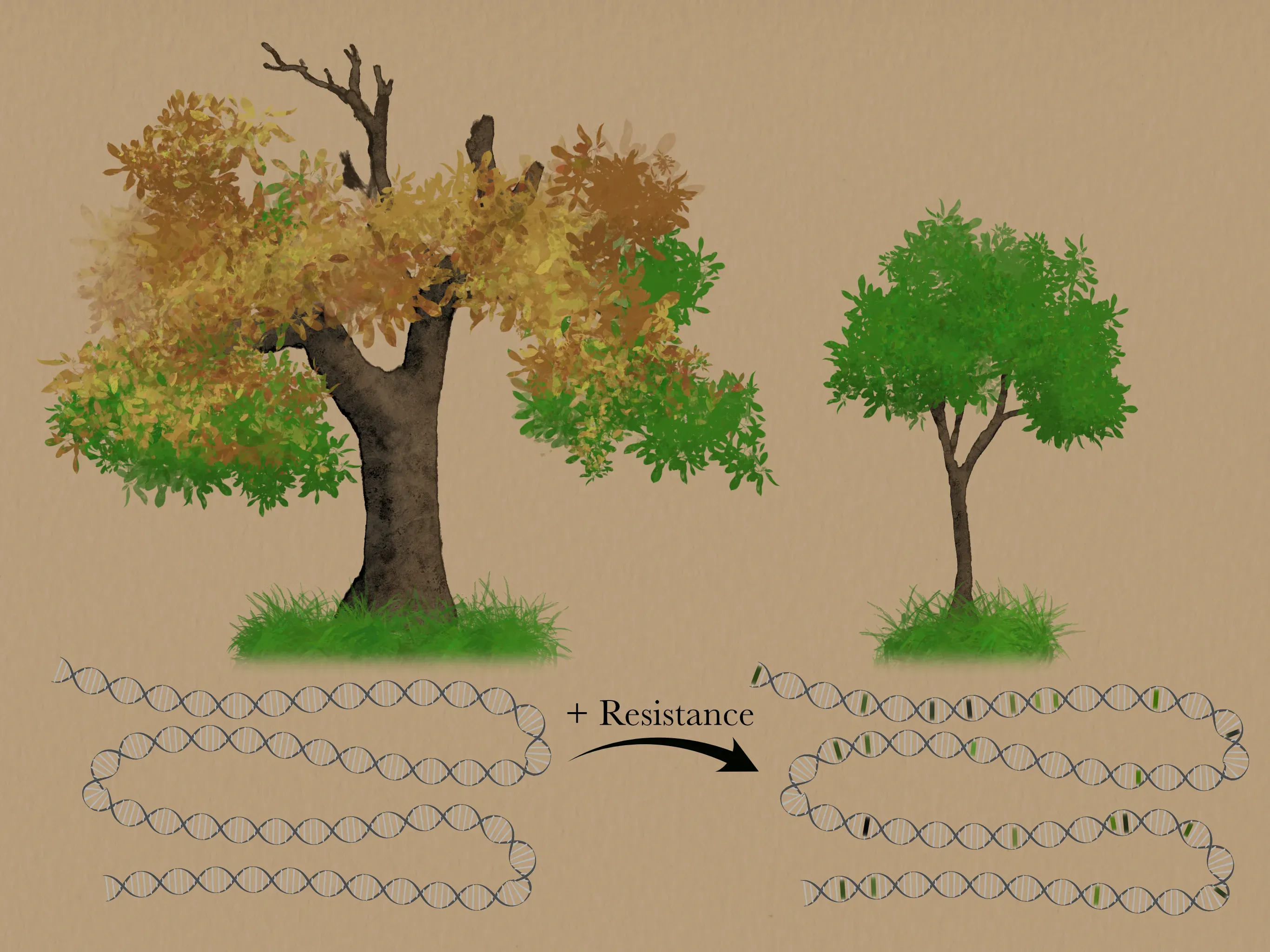
Ash trees evolving resistance
To see if ash trees were evolving resistance to ash dieback, our scientists, led by Prof Richard Buggs from Kew and Prof Richard Nichols from Queen Mary University, collected DNA samples from hundreds of trees in their chosen woodland in Surrey. They made sure to get samples from old trees which predate the arrival of ash dieback and young trees that have sprouted since the epidemic began.
In previous work they had discovered 10,000 existing mutations (also known as variations) along the entire length of ash DNA which are involved in resistance to ash dieback. In the Surrey woodland, they found that thousands of these variations were more common in young ash trees than in adult ones. After crunching the numbers, they were able to confirm that this was due to natural selection and demonstrate the 100 year-old theory of polygenic evolution.

The old and the young
The scientists think that this dramatic genetic change is down to how much more quickly the younger trees can die from the disease. When they first started growing, these saplings would’ve had to push through a layer of leaf litter infested with the spores of the fungus, so were almost guaranteed to be exposed to it before they even grew their first leaf.
Not only were they exposed very young, but because they would have been so small at this stage, the fungus will have been able to spread to every bit of the young seedling very quickly. This means that many would have died early on, and only those with some form of resistance would have survived and grown to later be sampled by our scientists.
The older trees on the other hand were already fully grown when the disease first arrived. Even if they have no resistance to the disease, the fungus has a harder time infecting them. The adult trees can also survive a lot longer after infection as they’re so much bigger and more robust than seedlings.
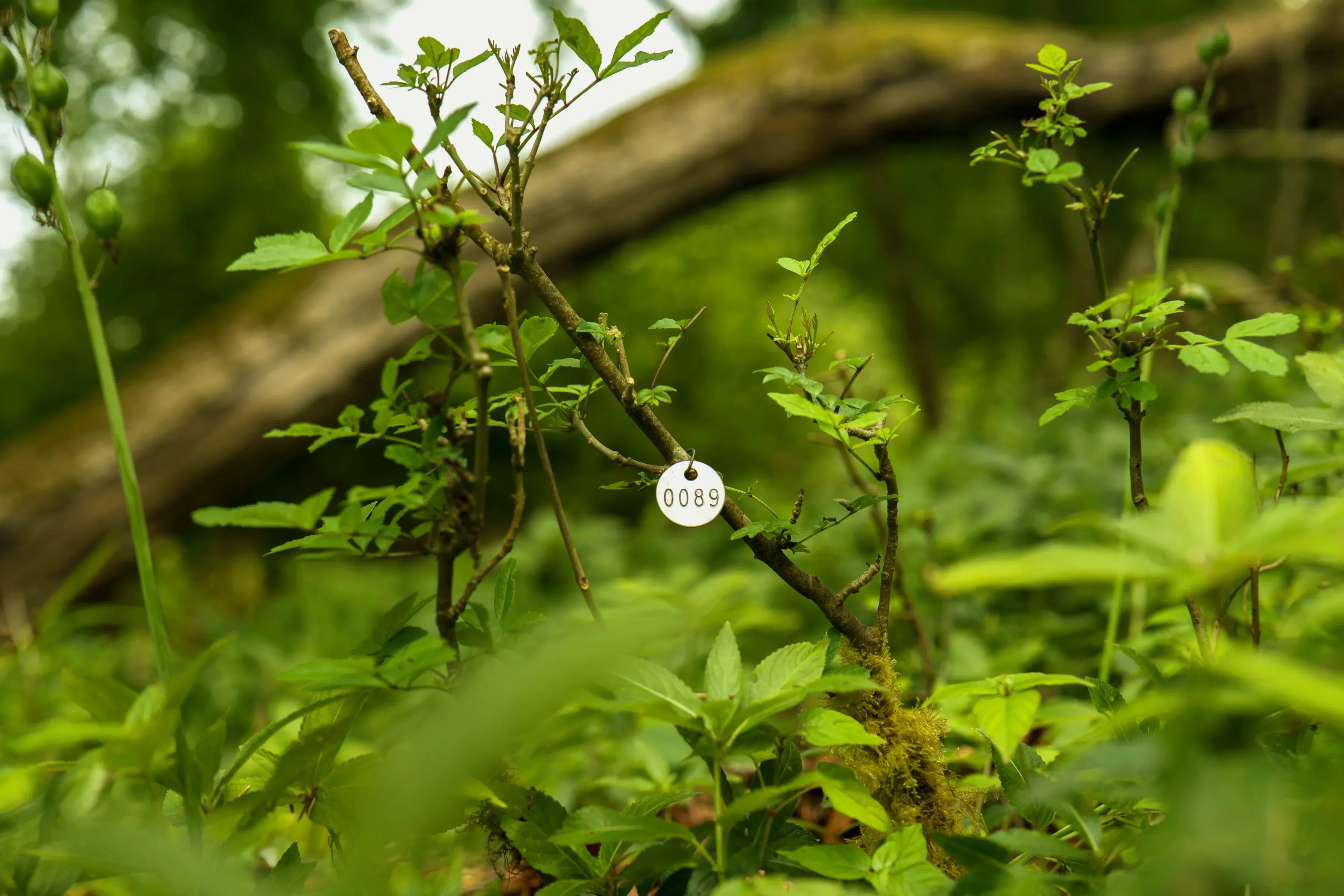
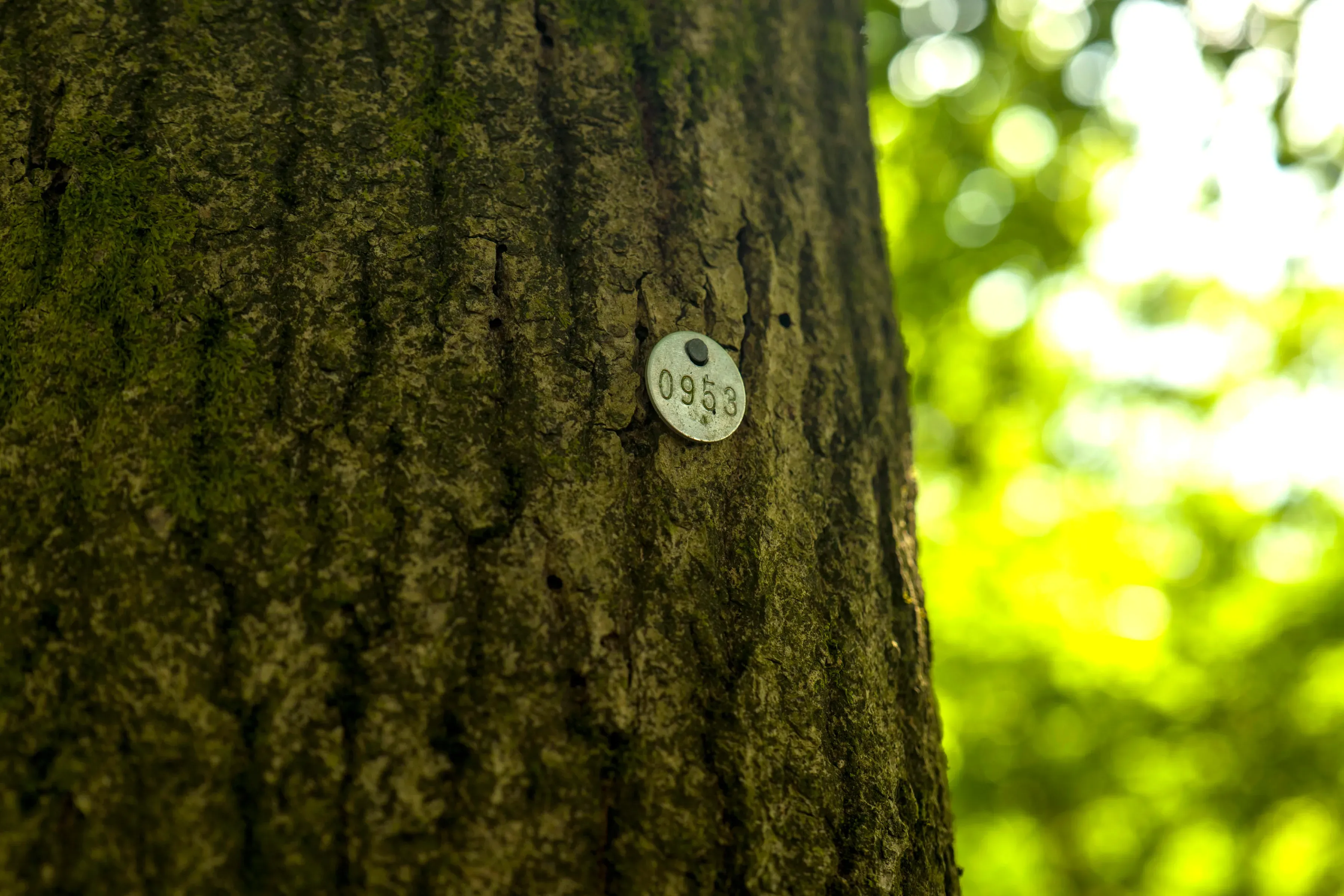
Does this mean the problem is solved?
Unfortunately, the fact that ash trees are evolving some resistance to dieback isn’t enough to guarantee their survival. At least, not on its own. But it does give us a way forward and a target for conservation efforts to focus on.
Currently, the number of trees which are being killed by this disease risks causing different populations to become isolated from one another. That’s a big problem if partial resistance to the disease is being developed all over the country. Each population might be developing resistance in slightly different ways, depending on their starting genetic variation. That means that to create the perfect combination of genes for complete immunity, we have to make sure that those different groups of trees can reproduce together.
It’s also possible that the best combination of existing genes still isn’t enough to give complete immunity. If that happens then we will have to wait for new mutations to happen, which is a much slower process. And, right now, time is against us.
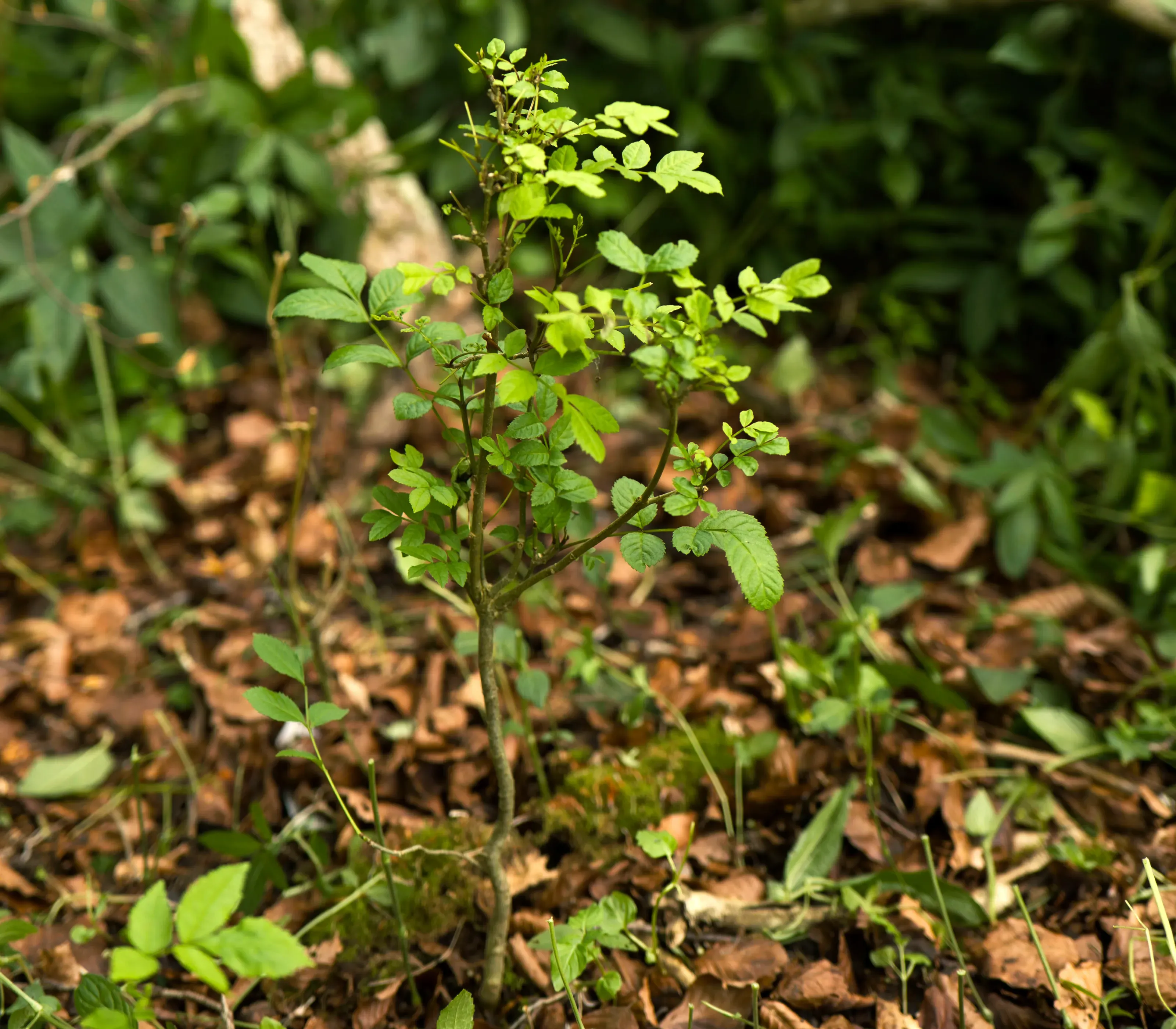
This is why our scientists at Kew are already moving on to projects that will give us that much-needed time. First, they are doing more studies to build our knowledge of the genes involved in ash dieback resistance. This will allow breeding programmes to choose the best trees to breed from. Second, they are working on methods to accelerate flowering in young ash trees so that we can avoid waiting a long time between generations, because it currently takes ten years for an ash tree to start reproducing.
The hope is that we can give the process of polygenic evolution a helping hand and use it to save this iconic species.


